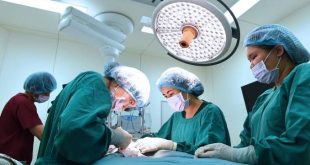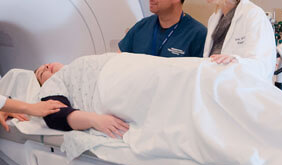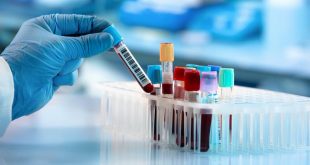Choledochoduodenostomy is a quick, safe, and easy procedure for treating complex calculous illnesses of the common bile duct. It is especially beneficial for high-risk, elderly, or handicapped patients. In this procedure, the anastomosis of the bile duct is commonly performed side-to-side. Through this, a surgical connection is made between the …
Read More »Lateral Internal Sphincterotomy Steps, Procedure, Recovery, Complications
The treatment option for anal fissures other than medications or dietary changes is characterized as Lateral Internal Sphincterotomy. It helps in treating the fissures by lowering the pressure in the anus. It assists in the reduction of anus spasms by increasing blood flow, and this, in turn, aids in tissue …
Read More »Retrolental Fibroplasia Mechanism, Symptoms, Causes, Treatment
Retrolental fibroplasia (RLF) also known as Terry syndrome or retinopathy of prematurity (ROP), is an eye illness that affects premature newborns who are under neonatal critical care and oxygen therapy due to their premature lungs. This disease mostly affects the retinas of premature newborns. Retinas are the light-sensitive inside lining of …
Read More »Perianal Pyramidal Protrusion Symptoms, Causes, Treatment
Perineal pyramidal refers to a protrusion of perineal tissue or a lump around the anus in young children, typically girls. This disease is known by different names such as infantile perianal pyramidal protrusion, infantile perineal protrusion, the perianal protrusion in childhood, and perianal pyramidal protrusion. It is distinguished by a …
Read More »Orbital Apex Syndrome Symptoms, Causes, Diagnosis, Treatment
Orbital apex syndrome is a condition in which the cranial and optic nerves are involved and they do not work properly. This condition can affect the vision of the individuals and can lead to visual loss. This disease also affects the region of the superior orbital fissure as well as …
Read More »Esophageal Papillomatosis Symptoms, Causes, Diagnosis, Treatment
Esophageal papilloma, a rare benign tumor, is sometimes linked to HPV infection. This HPV infection can develop digestive tract carcinomas, upper respiratory tract carcinomas, anogenital cancers, and cervix cancer. Squamous papillomas are aberrant masses that can develop in the esophagus. Squamous papillomas appear as tiny, whitish-pink exophytic projections that resemble warts. …
Read More »Nitroblue Tetrazolium Test Positive, Negative, Interpretation, Principle, Procedure
An immune system test, called the Nitroblue Tetrazolium Test, is a blood test that looks at how well the immune system can turn the colorless NBT into a dark blue. Chronic granulomatous disease is diagnosed through this test. If someone has CGD, their white blood cells do not change color …
Read More »Abdomino Phrenic Dyssynergia Symptoms, Causes, Test, Treatment
Abdomino-phrenic dyssynergia is a condition in which the gastrointestinal system does not function normally. The digestive system of the patient in this condition functions opposite to the normal. It involves contracting of diaphragm muscles and relaxing of abdominal muscles. Thus, the coordination between these two muscles is disturbed. This dysfunction …
Read More »Onychotillomania Symptoms, Causes, Test, Treatment
Onychotillomania, also known as a nail-picking disorder is a prevalent but under-diagnosed condition characterized by self-inflicted harm to the nail unit. Repetitive rubbing of the nail fold or the use of objects like razor blades, scissors, or knives can be used for causing harm. Onychotillomania is a mental disorder that …
Read More »Fibrosing Alveolitis Symptoms, Causes, Diagnosis, Treatment
Fibrosing alveolitis is a lung condition that occurs in the interstitial space. This is a set of disorders that impair the tissues that support the air sacs in the lungs, making it more difficult for them to take in the amount of oxygen that the body needs to function properly. …
Read More » Health & Care Information
Health & Care Information









